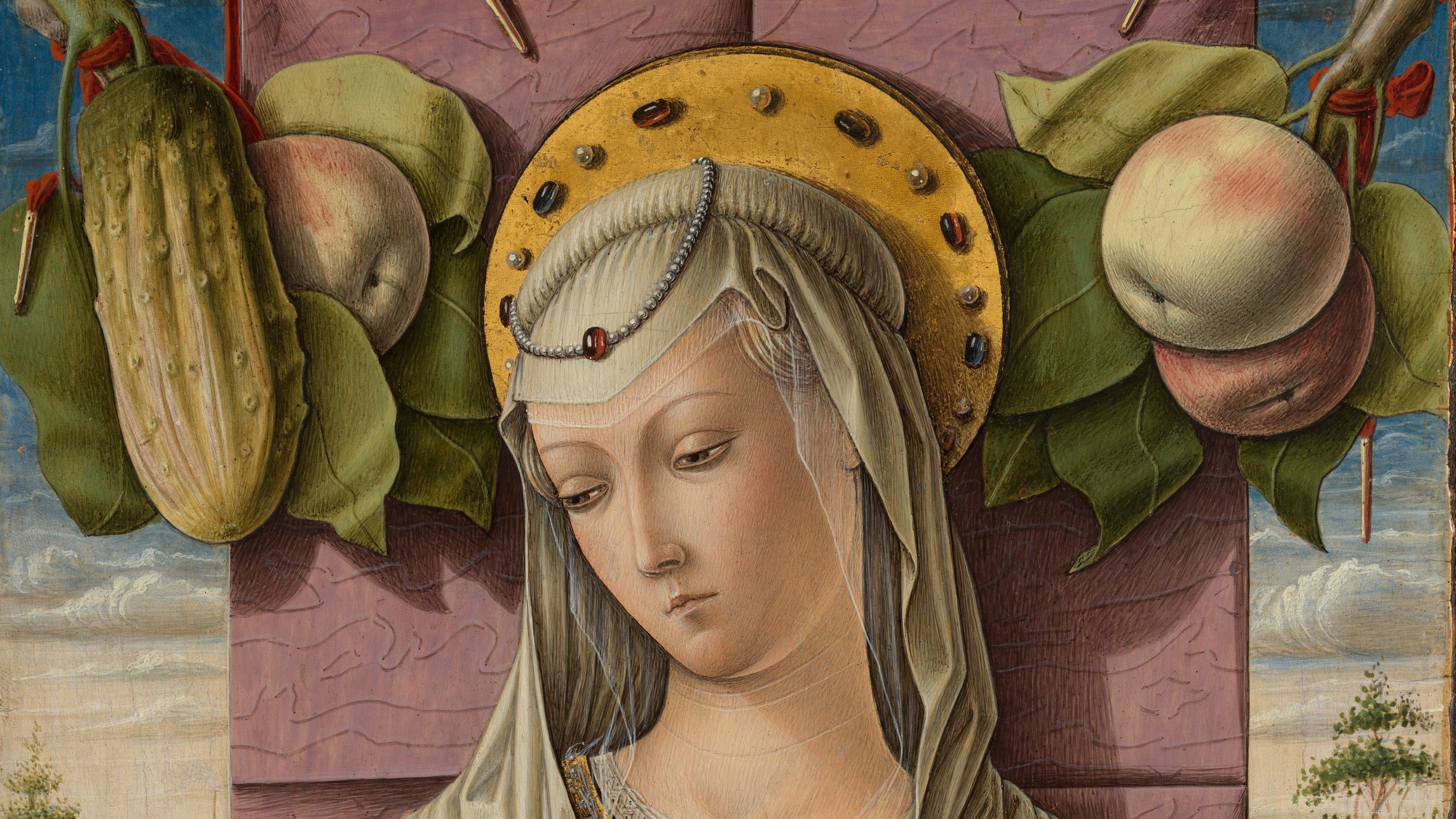
17 – Carlo Crivelli and His Contemporaries: A Different Perspective on Fifteenth-Century Italian Art
NEW – Course 17
Dr Amanda Hilliam
Summer School – Online
Monday 5 – Friday 9 July 2021
£395
Course description
Lauded by the artist Audrey Flack as a “Gothic, Baroque Super-Realist” in 1981, the Venetian painter Carlo Crivelli (c.1430-95) resists straightforward categorisation. His paintings merge traditional techniques such as the gold ground with witty effects of pictorial illusion, and as such possess both ‘medieval’ and ‘Renaissance’ characteristics. It therefore comes as little surprise that art historians since Vasari have neglected and misinterpreted his work. However, Crivelli is now witnessing a moment of recognition: a series of recent exhibitions and publications have shed new light on this most daring and technically skilled Venetian painter.
This course takes a broad view of Crivelli’s work. We will examine his artistic origins in the Veneto and the reasons for his great success in the Marches on the Adriatic coast. We will explore his work in relation to that of his contemporaries, including Mantegna and Cosimo Tura, and we will consider his innovative responses to the devotional needs of his patrons, who were largely Franciscan and Dominican friars. Finally, paying close attention to the physical qualities of the paintings themselves, we will ask what makes Crivelli’s work distinctive. His intelligent use of ornament and play on spatial dimensions deliberately counter naturalism, forcing us to reconsider existing narratives of fifteenth-century Italian art and to map out a wider context for Crivelli and his contemporaries.
Lecturer’s biography
Dr Amanda Hilliam completed her AHRC-funded PhD on Carlo Crivelli in 2020. Her thesis, undertaken at the National Gallery and Oxford Brookes, was a comprehensive account of Crivelli’s artistic practice and its devotional functions, informed by the results of fieldwork in the Marches and technical analysis conducted by the National Gallery’s Scientific Department. Amanda previously held positions at the National Gallery of Art in Washington D.C. and Sotheby’s London. She has published and lectured on Crivelli, and her work has received awards from the Gladys Krieble Delmas Foundation, the Italian Art Society, the Sir Denis Mahon Foundation, the Getty Foundation and the Samuel H. Kress Foundation.
